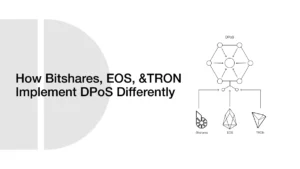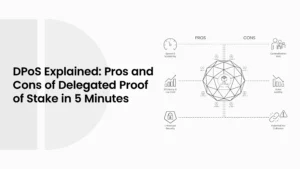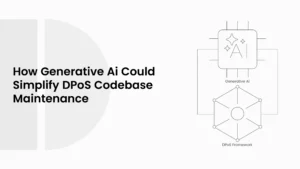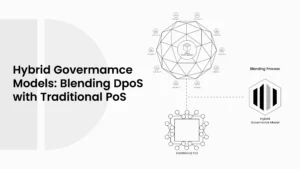DPoS Explained: How Blockchain Users Elect Validators
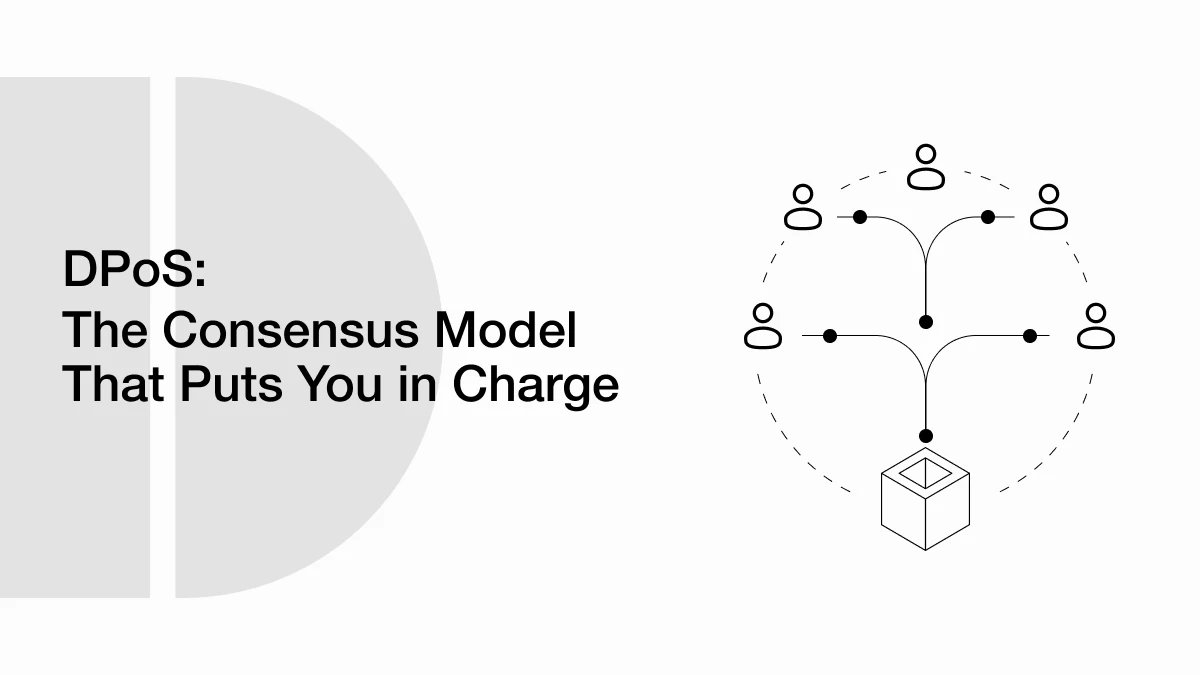
In the blockchain industry, reaching consensus on which transactions are valid is a fundamental challenge faced by users. Different blockchains have their own distinct ways of solving this problem using what are referred to as consensus mechanisms. Delegated Proof of Stake (DPoS) offers a faster and more community-driven alternative to traditional models like Proof of Work (PoW) and Proof of Stake (PoS) of such methods.
With DPoS, users get to vote for a group of selected trusted participants, known as validators or delegates, instead of each user being constrained to participate in the hectic process of validating transactions. These selected nodes or persons then have the privilege of creating blocks and ensuring the integrity of the network. This is more efficient and quicker in terms of energy consumption yet still keeping the power in the hands of the community. Understanding how these validators get elected is the way to understand how DPoS is done and why it matters.
DPoS and How It Works
Delegated Proof of Stake is a system where token holders vote for delegates using their tokens. These chosen delegates then become responsible for validating transactions and adding new blocks to the blockchain. With more tokens a user holds, the more voting power they have. This doesn’t mean they validate transactions themselves; instead, they choose who will do it on their behalf.
This model helps solve one of the biggest issues in blockchain: performance. In contrast, systems like Bitcoin’s PoW have thousands of machines competing to solve cryptographic puzzles, which is slow and consumes enormous energy. DPoS cuts that down by capping the number of individuals who can create blocks, yet still allows the rest of the community to decide who those individuals are.
The process is the same as electing representatives in a democratic framework. Users do not control each aspect personally; rather, they elect reliable people to represent them.
The Validator Election Process: How DPoS Elects Its Leaders
The election process commences when the candidates or organizations register. The candidates typically market their capabilities, infrastructure stability, and dedication to the network in order to garner support from the voters.
Token holders subsequently vote by locking or delegating tokens to these candidates. Based on various blockchains, users may vote for more than one delegate at a time or a single delegate. In other systems, users can change their votes at any time, making the process continuous and adaptable rather than static.
After counting the votes, the highest-ranked candidates are chosen as validators. Most DPoS networks comprise a finite number of active validators, typically between 21 and 100. These validators are then assigned the task of creating blocks in a predefined sequence, usually rotating in such a manner that every validator has a fair chance to work.
Validators are compensated for their effort with new tokens created or payment in the form of transaction fees. In others, they pay a percentage of these rewards to the voters who elected them, which promotes voter involvement and continued participation.
Keeping Validators Accountable
DPoS validators can be voted out instantly, something that is not likely to happen in conventional systems, where representatives serve out full terms after being elected irrespective of performance. Any validator that acts dishonestly, misses blocks, or acts in a manner that harms the network can have voters change allegiance instantly.
This holds validators responsible and on their toes and sensitive to the community. Regular voting and the capacity to change validators on a regular basis are the pillars of DPoS. These are continuous elections in such networks as TRON or EOS, and they allow users to maintain their sovereignty while constant performance and reliability are prioritized.
Improvements Through Research
With growing blockchain adoption, researchers steadily look for ways to make DPoS more secure, fair, and efficient. One such problem in classical DPoS systems is centralization brought about by large token holders, posing a danger of voting processes being taken over. To address this, several improvements have been proposed.
In 2023, researchers proposed combining voting with reputation scoring systems. Using ideas from algorithms like PageRank, they suggested that validators could be ranked not just by votes but also by their track record and contributions to the network. A credit system was also introduced, where validators earn trust points over time for honest behavior. This model decreases the chances of collusion and makes it difficult for an individual group to dominate the system.
Recently, in 2024, researchers introduced a model called DL-DPoS (Deep-Link Delegated Proof of Stake), which encourages less active voters to vote by associating them with more active voters. This shared voting strategy improves participation without requiring everyone to be constantly involved.
In addition, a security-focused mechanism called S&SEM was proposed in 2024. It adds duplicate-vote checks and multi-round election procedures to reduce fraud and manipulation while keeping the election process fast and reliable [Fernández-Naz & Scott, 2024].
Also Read: A Simple Guide to DPoS: Blockchain Voting System That Could Transform Democracy
Challenges to Decentralization and Voter Participation
Despite its strengths, DPoS is not without problems. One challenge is low voter turnout. Most of these users abstain from voting altogether, either through ignorance of what to do or simply because they think their vote won’t count. This undermines the democratic aspects of the system and benefits a select number of active users.
Another issue is concentration of power. Because voting power is linked to token holdings, users with more coins have more influence. This can result in a case of a handful of prosperous token holders essentially managing validator elections.
Continued research and practical innovation seek to address these issues by improving voting systems, incentive structures, and community mechanisms that facilitate ease of participation and make it more rewarding.
Conclusion
Delegated Proof of Stake is an efficient and practical means to operate blockchain networks. It features user voting for validators, integrating community governance with speedy and dependable performance. The system is made to be adaptable and equitable, enabling the community to continuously select, reward, or replace validators that keep the blockchain operational.
As more blockchains implement and improve DPoS, the technique continues to improve. Credit-based voting, quadratic voting, secure election protocols, and fuzzy logic are innovations that aid in solving its drawbacks and making it more robust in decentralized systems. In the long term, these innovations make DPoS a secure, equitable, and expandable solution for blockchain consensus.
Frequently Asked Questions (FAQs)
- What is Delegated Proof of Stake (DPoS), and how does it differ from PoW and PoS?
DPoS is a consensus mechanism where users vote for trusted validators to create blocks and verify transactions instead of all users participating directly. Unlike Proof of Work (PoW), it doesn’t require energy-intensive mining. And unlike traditional Proof of Stake (PoS), it introduces a representative model where elected delegates validate transactions on behalf of others. - How are validators elected in a DPoS system?
Validators are chosen through a voting process where token holders delegate their voting power to candidates. The top-ranked candidates with the most votes become active validators, rotating in block production and maintaining the network. Voters can change their votes anytime, making the system flexible and community-driven. - What incentives do validators and voters receive in DPoS?
Validators earn rewards in the form of new tokens or transaction fees. In many DPoS systems, they share a portion of these rewards with the voters who elected them. This creates an incentive for both validating honestly and for community participation in governance. - How does DPoS maintain accountability and prevent abuse?
Validators can be voted out at any time if they act maliciously, go offline, or underperform. This real-time accountability, paired with community control and optional reputation systems, ensures validators remain responsive to the interests of voters. - What innovations are being explored to improve DPoS?
Recent research has proposed enhancements like DL-DPoS (linked delegation for inactive voters), credit-based scoring, PageRank-style trust systems, and S&SEM (secure election mechanisms) to reduce centralization and fraud while encouraging greater participation and fairness.
Glossary of Key Terms
Delegated Proof of Stake (DPoS):
A blockchain consensus model where token holders vote for a limited number of validators who confirm transactions and create blocks.
Validators (or Delegates):
Elected participants in a DPoS system responsible for maintaining the blockchain by validating transactions and adding new blocks.
Consensus Mechanism:
The method by which a blockchain network agrees on the validity of transactions. DPoS is one of several types, alongside PoW and PoS.
Voting Power:
The influence a user has in validator elections, typically proportional to the number of tokens they hold or delegate.
Token Delegation:
The process of assigning one’s voting rights to another user (validator candidate) without transferring ownership of tokens.
Quadratic Voting:
A voting method that gives more balanced influence to voters by reducing the impact of large token holders. Each additional vote costs more tokens.
Reputation-Based Voting:
A system where validator selection includes past behavior and contributions, not just token-weighted votes.
DL-DPoS (Deep-Link Delegated Proof of Stake):
A newer DPoS variant where passive voters are paired with active ones, boosting overall turnout and community decision-making.
S&SEM:
A security-enhanced election model adding vote checks and multi-round elections to strengthen validator selection integrity.
Fuzzy Logic Voting:
An advanced technique allowing for more nuanced voting decisions, reducing rigid outcomes and promoting fairer consensus results.

